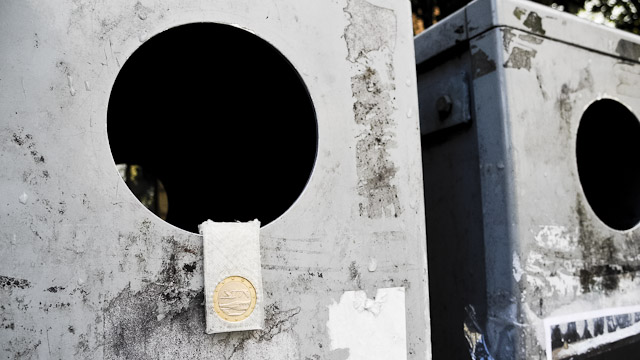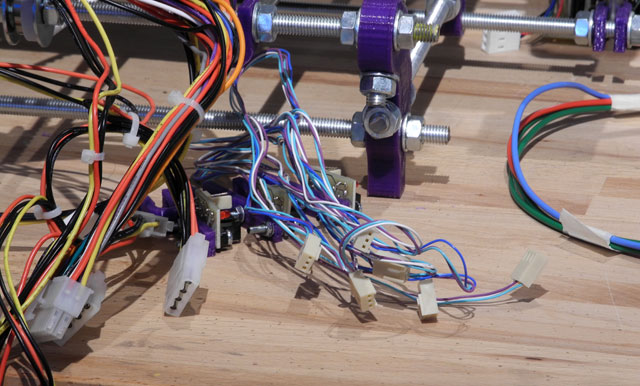A couple of days ago I’m standing in the kitchen rinsing the monthly batch of beans under cold water, and Sara is making tea next by me, absentmindedly singing “the thrill is gone.” I believe it’s called “the good life” as everything is mellow and comfortable at the moment.
But in order to mix it up it was a blast to go for another alleycat Saturday: Svartkatt 2012. We donned some makeup — Saras and Zenobias more elaborate than most — and biked around for a couple of hours, looking for clues to riddles, counting stuff in dark places and generally running around suspiciously with headlamps. As a sidenote, this was the first time ever that I’ve used a headlamp, and it’s so bloody useful that I’ll be using one at the slightest pretence — my God, I could actually see stuff without chipping my teeth on a soggy flashlight. What times we live in when this is possible!
Just as last year, I solemnly swear that until the next time I will actually exercise and have more than illusory muscles. Because of an organisational snafu we rode the second part of the race first, and once that was over my thighs were melting fillets of glue and painfully painy pain, so I called it a night and had a beer. Sara and Zenobia only rode the second part, swearing over the too big borrowed bikes. As of now they’re looking for race or road single speed bikes, so if you have one lying around get in touch.
Also, perhaps there is a gadget which could help Zenobia not to be half an hour late to the start of the race? Like a watch, but perhaps with an electric shock function?

In other news, I got a grant to do some outreach work with 3D printers. This is excellent since much other work has dried up, and I get to spend some time and effort to see what all this fabbing can lead to. I’ve taken the plan of cutting back on the number of projects too far and do hardly anything; certainly not my intention. So back up into the saddles, etc, which will be easier with the grant money. And this here brand new laptop I’m using.







